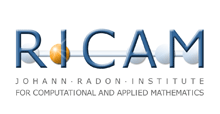Algorithms
Cumulative Reconstructor with domain decompositon (CuReD)
Fast wavefront reconstruction
The Cumulative Reconstructor (CuRe) is an algorithm to reconstruct an optical wavefront from Shack-Hartmann wavefront sensor measurements. The idea of the algorithm is based on the fact that the Shack-Hartmann operator is a discrete approximation to the gradient of the wavefront. The reconstruction of the signal can, therefore, be made by some integration procedure.
It has been shown both analytically and numerically that the quality of the reconstruction, measured by the Strehl ratio, is reasonable and increases with the increasing number of subapertures for the same telescope size. For large telescopes, the Cumulative Reconstructor with domain decomposition (CuReD) is used, in order to make the calculations more stable with respect to photon noise, as its impact gets higher for increasing telescope diameter.
The computational complexity of the method is linear in the number of unknowns. Moreover, due to its simple structure, the CuReD is pipelinable and parallelizable, which makes the effective computation even faster.
A possible decomposition of the domain
Wavefront reconstructed with the Cumulative Reconstructor
Performance of CuReD compared to an MVM
References
[1] A. Neubauer. On the ill-posedness and convergence of the Shack-Hartmann based wavefront reconstruction. J. Inv. Ill-Posed Problems, 18:551-576, 2010.
[3] M. Zhariy, A. Neubauer, M. Rosensteiner, and R. Ramlau. Cumulative wavefront reconstructor for the Shack-Hartman sensor. Inverse Problems and Imaging, 5(4):893-913, Nov 2011.
[5] A. Neubauer. A new cumulative wavefront reconstructor for the Shack-Hartmann sensor. J. Inv. Ill-Posed Problems, 21:451-476, 2013.


